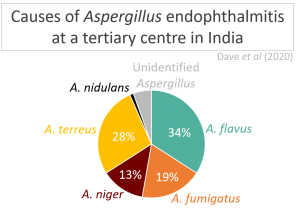Submitted by Aspergillus Administrator on 20 December 2010
Antibiotics have been the mainstay of treatment for bacterial infections for 60 years, a time before which it was routine to have to have a hospital stay to treat a bacterial infection. We have several generations of patients and doctors who have grown up assuming that bacterial infections are trivial as there will always be a cheap, safe, accessible packet of capsules that cause few side effects and have very low toxicity which will quickly bring the infection under control & eradicate it.
But this is gradually changing. Bacteria are fighting back, becoming resistant to antibiotics in larger numbers every year. Many old antibiotics are now useless and the usefulness of enough of the more modern drugs is threatened by the rise of resistance. There are several reasons for this trend but the outcome is clear – we must reserve the most recently developed antibiotics for only the most necessary applications to try to delay the development of resistance to them as long as possible.
In addition we need to develop new antibacterial drugs and keep on developing them to prevent the supply of effective antibiotics running dry. But there is a snag – antibiotics are cheap so there is minimal profit to be made out of them. Secondly in the last paragraph we have just discussed why new antibiotics must be used minimally, at least at first. As far as drug companies are concerned this is a ‘double whammy‘ as they can neither charge enough money or sell enough product to raise enough to pay back the investment it needs to make to develop a new drug. In its latest newsletter the Infectious Diseases Society of America (IDSA) mentions that only five of the 13 largest drug development companies are still searching for new antibiotics, suggesting that they prefer to invest in the development of more lucrative drugs.
This situation has now got so serious the US government are introducing new legislation to try to increase financial incentives for antibiotic development (Generating Antibiotic Incentives Now Act of 2010) by extending the time a company has rights to stop any other company reproducing a new drug (and thus reducing the profit) by 5 years. In practice this could mean a 40-50% increase in the time the company that made the original investment in the new antibiotic has to make money out of it. Hopefully this will make a substantial difference, however IDSA and partners are pushing the government to go further, lobbying for the need for 10 new antifungal drugs by 2020
Detailed article
News archives
-
Title
Date




